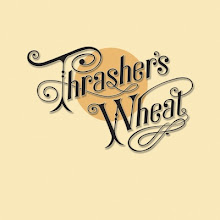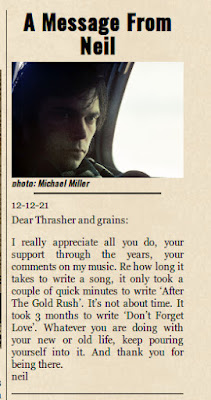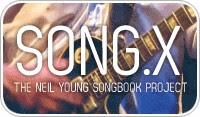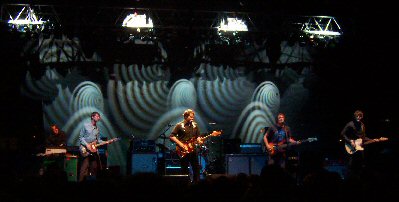Kent State, Ohio 47 Years Later: The Tin Soldiers March On & On...


Richard Milhous Nixon - 37th President of the United States (1969 - 1974)
Remember those days when students were brave enough to march in the streets and end a war?
Now that today's college students have been safely muzzled by crippling loan debt, there is little need for authority to teach students a lesson similar to that educational day of May 4, 1970. It's been 47 years since shots rang out across a college campus, leaving four dead in Ohio and the lives of so many of that generation changed forever by the day's events.
And so, the tin soldiers march on and on... in Baton Rouge. Baltimore. Ferguson. Our hometowns.
So we here at Thrasher's Wheat look forward, as we look back to that fateful day at Kent State. In the meantime, rest assured that the mainstream media will ignore this anniversary of real news, while busy fabricating the latest fake news.
Some believe that a conspiracy covering up the true motivations behind the shootings that involved James Allen Rhodes, Governor of Ohio and President Richard Nixon. (See the book Four Dead in Ohio: Was There a Conspiracy at Kent State by William A. Gordon
"13 seconds in Kent Ohio" - A tribute to those hurt or injured at Kent State Ohio on May 4th 1970. Song By Crosby, Stills, Nash & Young, and performed by Dala.

Kent State Massacre Evidence
Federal Bureau of Investigation (FBI) 11/15/73 document
via Kent State Truth Tribunal
(Click photo to enlarge)
On April 3, 2013,Kent State Truth Tribunal’s submission to the United Nations was posted ONLINE at the UN Human Rights Committee website.
The Federal Bureau of Investigation (FBI) 11/15/73 document (above) shows the shipment of 12,000 weapons within possession of the Ohio National Guard (ONG) including weapons used to kill and wound student protesters at Kent State University on May 4, 1970 with commentary on the destruction of 12,000 weapons.

Kent State Massacre Evidence
US Dept of Justice letter 11/19/73
via Kent State Truth Tribunal
(Click photo to enlarge)
The US Dept of Justice letter 11/19/73 pertains to Mr. Terry Norman -- a critical link in the Kent State Ohio Massacre Coverup.

70 Seconds Before Kent State Shootings
May 4, 1970 @ 12:24 PM
Kent State Truth Tribunal
So what really happened at Kent State, Ohio 43 years ago tomorrow?
Based on last week's U.S. Department of Justice (DOJ) investigation report, we still might never know. Or will we someday learn the awful truth of that tragic day that left 4 dead in Ohio?
It seems that the key to the truth lies with Terry Norman.
In recently discovered film of the Kent State Shooting in 1970 (1:07.40 thru 1:08), FBI informant provocateur Terry Norman (photo at top) is the young man in the light colored sports jacket. Earlier that day Norman's mentor, Detective Tom Kelly from the Kent Police had attempted to have Norman's gun approved for carrying on campus during the demonstrations, but that approval never came so it's KEY that the video clearly shows Norman handing over his gun to Detective Kelly.
From forensic evidence expert Stuart Allen's analyses of the Kent State Tape in 2010, we learned that Norman shot that weapon at the May 4th demonstration as he was attacked & beat-up by students who saw his gun. (More on Terry Norman ~ Does Terry Norman Hold the Key to Kent State?.)
Watching these Kent State videos without sound, Norman's gun hand-off coupled with the post-Kent State Tape analysis, we now understand the importance of this interaction caught on video & at many other sources.
Norman's pistol 'created the sound of sniper fire.'
In response to the DOJ whitewash report Congressman Dennis Kucinich issued a statement:
“The letter also failed to indicate any efforts to reconcile the evidence in the recording with any prior statements about the incident made by FBI paid informant, Terry Norman, who was on campus that day and was known to have brandished a gun that might have created the sounds caught in the recording.
“While I appreciate the response from the Justice Department, ultimately, they fail to examine key questions and discrepancies. It is well known that an FBI informant, Terry Norman, was on the campus. That FBI informant was carrying a gun. Eye witnesses testified that they saw Mr. Norman brandish that weapon. Two experts in forensic audio, who have previously testified in court regarding audio forensics, found gunshots in their analysis of the audio recording.
Did an FBI informant discharge a firearm at Kent State?
Did an FBI informant precipitate the shootings?"
Why is understanding the Kent State Ohio Massacre critical?
To understand the events of May 4, 1970 at Kent State and the four dead in Ohio, is to understand much of what has happened in our history before, during and after.
In the intervening 41 years, there have been a wide range of commissions, studies, research and theories of what actually led to twenty-eight Ohio National Guardsmen shooting into a crowd of anti-war protesters at Kent State University which left four college students dead on the ground.

Photo by Kent State photojournalism student John Filo
"History never exactly repeats itself.
But its currents are never far from the present. As today’s protesters and police employ bolder tactics, the Kent State and Jackson State anniversaries should remind us that deadly mistakes can and do happen. It is the government’s responsibility to wield proportionate force, not to over-arm police and place them in a position where they could panic with deadly results."
~~ Steven Rosenfeld, Will a Militarized Police Force Facing Occupy Wall Street Lead to Another Kent State Massacre? | Civil Liberties | AlterNet
Despite many official denials, there have always been persistent theories that the National Guard was actually provoked into the shootings by a belief that they were being fired upon themselves and therefore were acting in self defense.
What follows is a brief recap for those less familiar with the The Kent State Massacre, followed by the latest developments.
The spring of 1970 was a time of significant unrest on college campuses protesting the Vietnam war and President Richard Nixon's announcement of a new American invasion of Cambodia, provoking an escalation in anti-war protests. The anti-war protest movement culminated with the Kent State Massacre which resulted in hundreds of universities, colleges, and high schools closing throughout the United States due to a student strike of four million students. The official President's Commission on Campus Unrest concluded that "the indiscriminate firing of rifles into a crowd of students and the deaths that followed were unnecessary, unwarranted, and inexcusable."

Twenty-eight Ohio National Guardsmen fired sixty-seven rounds in thirteen seconds, leaving four students dead
Here is a summary of recent new developments from Kent State Truth Tribunal. (For more, see Kent State Truth Tribunal. Thanks Laurel for all of your work in your sister Allison's name.)

"They were about to walk out on stage and were spending a moment warming up."
Photo by Henry Diltz
Immediately after the Kent State shooting on May 4, 1970, Neil Young composed the song "Ohio" after looking at photos appearing in Life magazine and then taking a walk in the woods. Crosby, Stills, Nash, and Young went to the studio and recorded the song which was released to radio stations shortly after the killings.
A rather significant article in today's The Cleveland (Ohio) Plain Dealer "Neil Young's 'Ohio' evokes strong images of May 4, 1970 shootings at Kent State" by Mark Dawidziak:
It was more than just another protest song.
Ohio was a cry of anguish, penned by Neil Young after seeing pictures taken at Kent State University on May 4, 1970.
But 40 years after members of the Ohio National Guard opened fire on college students, Young's "Ohio" remains the most evocative pop-culture response to a defining moment in American history.
"This is an event that now is in every history book," said Carole A. Barbato, a Kent State University professor of communication studies who team-teaches a course on May 4. "Wherever you live, even though your environment obviously shapes how you perceive things, you're probably as aware of the shootings at Kent State as those of us in Northeast Ohio. And even though this still would be in the history books, the pop culture certainly does perpetuate that. "Ohio" was entering the pop-culture consciousness within three weeks of the shootings.
"It was the quickest and best reaction to Kent State, with Neil Young acting as 50 percent songwriter and 50 percent journalist," said David Bianculli, a pop-culture historian who teaches at Rowan University and regularly contributes to NPR's "Fresh Air."
"I'll tell you what that song meant," said Bianculli, author of the recently published "Dangerously Funny: The Uncensored Story of the Smothers Brothers Comedy Hour." "After the assassinations of Martin Luther King and Bobby Kennedy, you felt kind of helpless as a young person. It seemed that when someone had your voice, that voice was silenced, usually by violence.
"Then you have Kent State, and college kids are actually fired upon. And when you just might start to be thinking, you don't dare have a voice or there is no voice, from the radio comes this voice of solidarity and outrage. It wasn't just a pop song."
...
"After 1970, that doesn't happen again. It didn't need to happen again, mostly because it didn't need to happen there. And that's what Neil Young's song spoke to."
Thanks Ken D.
More on Neil Young composed song "Ohio" performed by Crosby, Stills, Nash & Young (CSNY).
Timeline of Events Leading up to May 4, 1970:
Let us continue the struggle to ensure that Allison's murder (& Bill's, Jeffry's and Sandra's) was not in vain.




The Four Dead in Ohio
Allison Krause - Age: 19, 110 YardsWilliam Schroeder - Age: 19, 130 Yards
Jeffrey Miller - Age: 20, 90 Yards
Sandra Scheuer - Age: 20, 130 Yards

Crosby, Stills & Nash reflect on 'Ohio' 44 years after Kent State 'CNN Special Report Witnessed: The Killings at Kent State’ airs this Sunday, May 4 at 7p E.T. on CNN. Singer David Crosby says his first reaction to reading Neil Young's lyrics for the song 'Ohio' was "this is gonna cause some trouble." Then he said "get us a studio and get it now." 'Ohio' was written as a response to National Guard forces opening fire on anti-Vietnam protesters on the campus of Kent State. Four protesters were killed, nine others were wounded. Sunday May 4th marks 44 years since the tragedy.
On May 4, 1970 my sister Allison was shot to death around noon as she protested against the expanding Vietnam War and the US military occupation of her college campus, Kent State University. Ever since May 1970, American leadership, Kent State University and US government agencies involved in the Kent State Massacre planning, the execution and the aftermath have never claimed that the murders at #KentState were at the hands of the US government … or that it was even murder at all. To restate this conundrum, US military bullets killed and injured American students at a peace rally. The US troops shot armor-piercing bullets from American war weapons, killing four students, critically wounding nine yet ever since that day, American leadership has never referred to or reflected on the fact that young people and protesters were shot dead by US military personnel with US military weapons. A drastically different view (fostered mostly by #truth) will forever be held by most of the Baby Boomers, the real target on this great US government onslaught. Just after Kent State, EVERYBODY KNEW they meant to #kill at Kent State … and 10 days later in a related show of force, two additional American students were shot dead at Jackson State University, with the tally at six students in May 1970. This long-gone American history show us how the US government has gotten away with murder against American young adults and protestors … now going on 44 years. ~~Laurel Krause
Labels: Crosby Stills Nash Young, csny, neil young, ohio

































 Human Highway
Human Highway

















 Concert Review of the Moment
Concert Review of the Moment





 This Land is My Land
This Land is My Land

 FREEDOM In A New Year
FREEDOM In A New Year









 *Thanks Neil!*
*Thanks Neil!*




![[EFC Blue Ribbon - Free Speech Online]](http://www.thrasherswheat.org/gifs/free-speech.gif)











 The Unbearable Lightness of Being Neil Young
The Unbearable Lightness of Being Neil Young Pardon My Heart
Pardon My Heart



 "We're The Ones
"We're The Ones  Thanks for Supporting Thrasher's Wheat!
Thanks for Supporting Thrasher's Wheat!




 This blog
This blog 
 (... he didn't kill himself either...)
#AaronDidntKillHimself
(... he didn't kill himself either...)
#AaronDidntKillHimself








































































 Neil Young's Moon Songs
Neil Young's Moon Songs




 Civic Duty Is Not Terrorism
Civic Duty Is Not Terrorism Orwell (and Grandpa) Was Right
Orwell (and Grandpa) Was Right


 What's So Funny About
What's So Funny About 



6 Comments:
A comment posted on the 2015 anniversary by Michele Regal:
...
I was a young girl of not quite nine years old in May of 1970. But my brother was eight years older than I and back in the Vietnam era, the news reported the war very graphically. It was live feed of helicopters hovering over the jungle with sweaty and bloody soldiers pulling limp bodies of fellow bloodied soldiers out of the jungle and on to the chopper.
I lived in Tucson AZ where there is a large air force base. They didnt have any rules about the flight paths over residential areas back then, and jets would make so much noise, they would shake the house. They also made this little girl cry and worry, that my brother was going to be drafted to the war in Vietnam. So, by having an older brother, I was attuned to what was going on in the world, and my brothers music was much as my own as my Partridge Family albums."Ohio" was an anthem and even at my young age, I knew what it meant.
I was very astute for my age. Even my brother says I was born age forty. My heart goes out to Jeffs' mother who posted so eloquently how she felt then and now, what she missed, and so forth. Her post is a tribute to all of the students, and a priceless document by someone so profoundly affected by what happened on that campus, on that day. It should be memorialized. I don't know if she would be alive to today, as he son would be sixtyfive by now (We are now 45 years removed from that horrible day, it is 2015 now) How old might she be now and is she still alive.
I wish I could thank her for her coragous words, her strength and honesty. I wish I could thank Neil Young for his mastery of the English language and his ability to tell a story so accurately. He is a wordsmith. I have cried tears of joy and sadness at his concerts, where I sit mesmerized by the lyrics as much as the musicianship.
The gunning down of those four student took away the innocense of a generation. The deaths took away the feeling that they has a say so in what their country would or wouldnt do.
I grieve these events. I grieve events since then. But these children did in fact die for our country, even though they were no specific uniform, except for maybe, bell bottom jeans and long hair. They were the swoldiers at home, doing what they could to bend the ears of politicians, who were still old school, and didnt recognize that times were changing.
God continue to bless these four young souls. Their lives did in fact have meaning. We continue to remember them today, years later. Recognizing that their lives were stolen lives.
I just want to say, I know the families still grieve, even though they buried their babies 45 years ago. Their lives had meaning. I write this today because they had meaning. I can assure you that people are remembering them, some are just learning about this for the first time and asking questions.
Their lives had meaning. God bless them. I wish I had the ability to write the master post to convey my sorrow, confusion and my attempts to understand this event. But it simply a good thing, that I remember.
God bless all.
Kent State was a Tragedy.
The reality is 4 people were killed senselessly.
It was not a conspiracy of those in Power to murder those who were exercising the right of free speech.
It was young protesters with varying motivations clashing with young soldiers in the mass confusion of a collision of a fucked up situation.
It was not open season on the perfect protesters by the big bad military complex.
It was a unfortunately typical human display of good and bad behavior on both sides that culminated in a tragedy that left 4 dead in Ohio...
@ TOM : Thanks for your thoughts on this anniversary day. Yes, 5/4/70 was indeed tragic.
But we take major issue w/ your accusation of "conspiracy theory".
A couple of points. 1) What evidence are you presenting to support? Unlike most blogs, we do allow embedded links in comments. Please share. 2) What specifically do you see in error above?
Lastly, from https://en.wikipedia.org/wiki/President%27s_Commission_on_Campus_Unrest
"On June 13, 1970, President Richard Nixon established the President's Commission on Campus unrest, which became known as the Scranton Commission after its chairman, former Pennsylvania governor William Scranton.
Scranton was asked to study the dissent, disorder, and violence breaking out on college and university campuses, particularly the national student strike that was then going on. The student strike was both a general protest against the Vietnam War and a specific response to the American invasion of Cambodia and the killings of four students at Kent State University in Ohio. Other violent confrontations, such as the killing of two students at Jackson State College in Mississippi, also incited public and administration concern.[1]
Scranton concluded that, "It is true that the amount of campus disruption and violence certainly was much less in the period when the war seemed to be going in the direction of terminating and people were beginning to come back to the United States, for example, late last fall, this last winter, and early spring. And certainly it got much stronger after the Cambodia. We all know that, after the Cambodian invasion. So the less extenuation there is of American participation and the more return of men, the more helpful it is, of course."[2]
The Commission issued its findings in a September 1970 report. It concluded that the shootings at Kent State were unjustified.
The report said: Even if the guardsmen faced danger, it was not a danger that called for lethal force. The 61 shots by 28 guardsmen certainly cannot be justified. Apparently, no order to fire was given, and there was inadequate fire control discipline on Blanket Hill. The Kent State tragedy must mark the last time that, as a matter of course, loaded rifles are issued to guardsmen confronting student demonstrators.[1]
Regarding the Scranton Commission:
"Charles A. Thomas worked for twelve years at the National Archives and was selected to study films of the shooting. He concluded that, "none of the available footage showing dead and wounded students following the lethal volley had been used in assembling the compilation film shown at the public hearings" of the Scranton presidential commission in August 1970. In Kent State/May 4, edited by Scott L. Bills (KSU Press) Thomas wrote, "it looked very much as if someone had doctored the evidence to minimize any impression of the Guard’s brutality and to plant the spurious notion that the soldiers had been confronted with a raging student mob."
https://www.lewrockwell.com/2004/04/murray-polner/the-kent-state-murders/
The guardsmen were young people much the same age as the protesters and not a combat-hardened military unit.
Lots of stupidity and immaturity and panic on all sides, with some pretty reprehensible behavior on both sides.
Humans get together and things happen.
Sometimes good but often not so much.
I fear we are headed for another brutal crackdown in the US as protests grow.
Post a Comment
<< Home